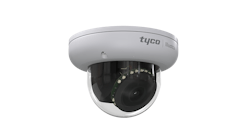Lengthonomics: A Key Factor in Keeping Airport Costs Down and Security Up
There’s no doubt that air travel is back to full capacity with Transportation Security Administration (TSA) checkpoint travel numbers now exceeding 2019 pre-pandemic numbers. While demand for business and leisure travel may be back in full force, airport operations are not. The already understaffed airline industry impacted by ongoing COVID-19 outbreaks and severe weather events has flight cancellations and delays surging and passenger tensions rising.
Larger volumes of passengers and baggage combined with a volatile global security climate and lack of airport resources and labor are placing a huge burden on airport security operators. These challenges are compounded by outdated security systems that rely on manual response, driving airports across North America to adopt smarter security systems with analytics that can monitor vehicles and passenger flow rates, perform facial recognition, identify abnormalities, and distinguish between real and false alarms. To streamline baggage screening processes and improve security at checkpoints across the U.S., the TSA also recently announced the rollout of new credential authentication and tomography technology scanners with sophisticated 3-D imaging and algorithms to detect weapons, explosives, and other prohibited items.
While these changes aim to strengthen security, speed up processes, and increase efficiency, upgrading infrastructure to support advanced security systems presents its own challenge for airport security operations. The average age of U.S. airports is 40 years, and many are finding that at least some of their existing infrastructure cannot support today’s advanced digital video surveillance, screening, and access control systems. At the same time, many airports are tasked with expanding security into more locations to ensure sufficient coverage—from parking structures and curbside areas to outbuildings and control centers. Considerable airport space premiums and constraints combined with the disruptive, time consuming, and costly process of upgrading and deploying infrastructure to support advanced security systems calls for new approaches and cabling solutions that can save space, time, and money.
The Importance of Lengthonomics
The design of an airport and its terminals essentially comprises a hub-and-spoke campus with high-rise buildings placed on their sides where terminal distances can range anywhere from hundreds to even thousands of meters, depending on the number of gates. Within each of these terminals, airports need to accommodate as many gates as possible along with restrooms, food service, and retail establishments to meet the needs and expectations of passengers. That leaves extremely limited operational space, including controlled and secure IT space that houses the network equipment needed to connect security devices throughout the terminal. Airports today also include large open retail and lounge spaces, baggage claim areas, parking structures, outbuildings, and other environments that require security.
Over the past decade, the security industry has migrated to Internet Protocol (IP) devices that connect to cost-effective Ethernet networks and offer more advanced features. For example, IP surveillance cameras offer much higher resolution and come in a wider variety of types (e.g., fisheye, thermal, multi-image, infrared, etc.) to meet the security requirements of a given space. Networked IP-based security systems also provide easier set-up and centralized management and enable integration across various security systems. The use of Ethernet copper cables also supports power over Ethernet (PoE) that delivers DC power to end devices, eliminating the cost and expense of deploying AC power sources at end devices.
One of the challenges of IP-based surveillance systems using Ethernet copper cables are that industry cabling standards limit the length of a channel to 100 meters from the network equipment (e.g., switch) housed in an IT closet to the end device (e.g., surveillance camera, scanners, access control panels, etc.). While 100 meters supports connecting devices in most corporate office buildings where IT closets are vertically stacked on each floor, this distance is significantly prohibitive in airport terminals. There simply isn’t enough space available to support the number of IT closets needed to maintain the 100-meter distance to all security devices. Many large open areas such as baggage claim areas and parking structures also span distances greater than 100 meters. Not only is airport space at a premium, but every IT closet also requires costly power, cooling, and other supporting infrastructure for the equipment. The average cost of adding a new IT closet to accommodate the 100-meter distance can soar well into the six-figure range. Today’s IT closets also require more space to accommodate the growing number of networked devices and equipment that moves computing closer to the edge of the network to enable data analysis in near real time. Cable lengths that exceed 100 meters dramatically reduce the number of IT closets required and associated equipment, power, and cooling costs. This can be referred to as “lengthonomics.”
Determining the lengthonomics of cable runs to devices in an airport has a lot more to do with just length. For example, other than implementing an IT closet that is not economically and/or physically feasible, one option to accommodating longer cable lengths is to use fiber optic cabling that can transmit data to much farther distances of up to 40 kilometers. However, optical network switches use expensive laser transceivers that can cost more than 10 times that of copper-based switches. Fiber cabling also does not have the ability to deliver DC power, requiring the added expense of an AC power circuit or separate copper conductors to deliver DC power to end devices.
Another consideration with fiber cabling is that there are a limited number of security devices that offer a fiber interface, often requiring the use of media converters that perform optical-electrical conversion and enable connecting devices with Ethernet copper cabling. While media converters can deliver PoE power to devices, the converters themselves still require power and add additional points of failure in public areas that are difficult and disruptive to access when maintenance is required. Security devices with a fiber interface are also significantly more expensive than those with a copper interface. So when considering lengthonomics, it’s important to take into account the cost all of the active equipment, devices, potential maintenance, and risk. Just because fiber cabling supports greater distances, doesn’t make it the most economically-sound choice. In reality, Ethernet copper cabling with its ability to support PoE remains the most cost-effective solution. Thankfully, there are Ethernet copper cabling solutions available that support distances beyond 100 meters to optimize lengthonomics in airports.
A Cost-Saving Solution for Airports
While cabling standards limit Ethernet copper cabling to 100 meters, it’s important to understand that unlike mandatory codes that are enforceable by law, these standards are voluntary guidelines based on best practices and minimally compliant components. Cabling vendors have long developed solutions that exceed the standards, providing headroom to accommodate installation variables and ensure optimal performance in a wide range of environments. With Ethernet copper cabling being the most cost-effective option for connecting and powering IP based security devices, a long-distance Ethernet copper cabling solution that can support distances beyond 100 meters can be a game changer. While this approach is not technically compliant with the 100-meter distance limitation called out in cabling standards, the primary consideration is the ability of a cabling channel to support the intended data transmission rate and level of PoE power. How exactly is this accomplished over longer distances?
The gauge size of copper conductors, twist rates, material characteristics, and overall construction of Ethernet copper cabling have a lot to do with the ability to transmit data and PoE power beyond 100 meters. For example, larger gauge sizes have less resistance and signal loss that allow for transmitting data at higher speeds and delivering more power within a given channel length. Optimized twist schemes and specialty materials leveraged during the cabling construction process can also reduce crosstalk and other interference that can impact the ability of an Ethernet copper cabling channel to effectively transmit intended data rates over the channel. It’s a combination of these strategies that allow Ethernet copper cables to connect security devices to distances greater than 100 meters, allowing airports to continue using the most cost-effective option while reducing the number of IT closets and eliminating potential points of failure to save space, time, and money. For example, Paige DataCom Solutions designed their long-distance patented GameChanger Cable to support up to 2.5 Gigabits per second (Gb/s) Ethernet data transmission and up to 100 Watts of PoE power to 200 meters, which is more than enough bandwidth and power to support the majority of IP security devices to twice the distance called out in voluntary cabling standards.
To provide a better understanding of the potential savings, third-party analysis was conducted for 106 IP surveillance cameras in an 860,000 square-foot space with the longest cable channel being 260 meters. The use of long-distance Ethernet copper cabling cut cost by more than 80% compared to using Ethernet fiber optic cabling with media converters. Note that the analysis did not account for the savings of labor or reduced IT space that comes with supporting longer distances.
Considering that airlines pay anywhere between $100,000 and $500,000 a month depending on the number of gates and even a small retail space in a terminal can lease anywhere from $2000 to $15,000 per month, the space savings gained with long-distance Ethernet copper cabling can also mean increased revenue for airports. That explains why major international airports like Los Angeles, John F. Kennedy, LaGuardia, Charlotte Douglas, Nashville, Miami, Tampa have chosen long-distance Ethernet copper cables to connect and power security devices throughout their terminals. As airports around the world continue to upgrade and expand security amidst rising threats, costs, and labor shortages, they too can discover the Lengthonomics of using long-distance Ethernet copper cabling.
David Coleman has more than 25 years of experience in the security, IT, and life safety industries. He joined the executive management team at Paige in 2016 and serves as VP, Marketing & Datacom where he enjoys bringing game-changing cable solutions to market for security and IT professionals.




![Philadelphia International Airport [PHL] is working with Arora Engineers to upgrade their surveillance system in areas in Terminals A – West and A – East. Philadelphia International Airport [PHL] is working with Arora Engineers to upgrade their surveillance system in areas in Terminals A – West and A – East.](https://img.aviationpros.com/files/base/cygnus/cavc/image/2022/09/cam.6321eaa49a1c5.png?auto=format,compress&fit=&q=45&h=139&height=139&w=250&width=250)
